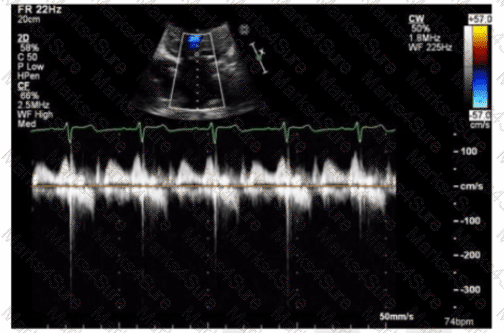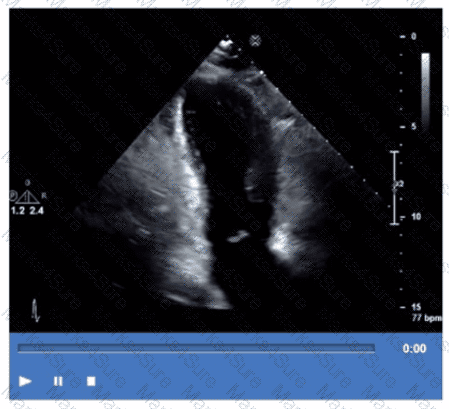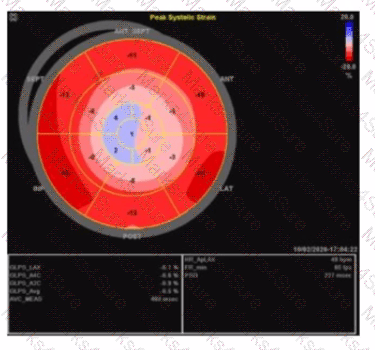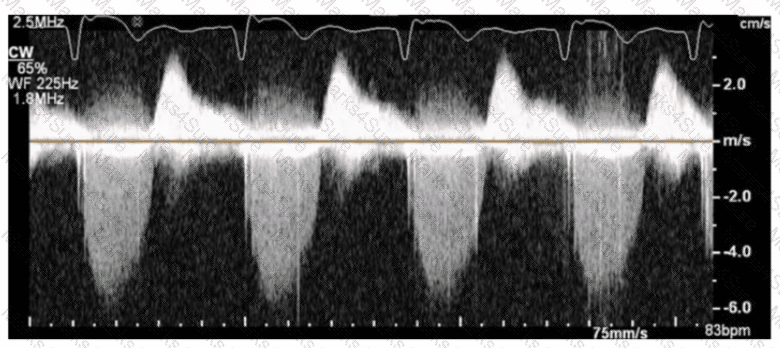A mitral valve pressure half-time of 220 ms is consistent with what mitral valve area?
Which congenital abnormality is most consistent with the findings in this video?
Mid to distal septal akinesis in post-stress imaging of the apical four-chamber view is suggestive of disease in which coronary artery?
What does the Qp represent in an atrial septal defect shunt ratio measurement (Qp/Qs)?
Which next step is appropriate after obtaining the Doppler signal in this image?

Which of the following is the gold standard for assessment of coronary artery disease?
Which technique best determines a trileaflet aortic valve from a bicuspid aortic valve?
Which coronary artery territory is associated with the wall motion abnormality demonstrated in this video?

Which statement is considered true regarding tricuspid annular plane systolic excursion (TAPSE)?
Which pathology is consistent with the left ventricular strain pattern shown in this image?

Which valve and secondary finding are associated with the 'flying W sign on spectral Doppler and M-mode?
Which Doppler signal is used to calculate the pulmonary artery end-diastolic pressure gradient?
The sonographer obtains this Doppler signal while using the non-imaging transducer in the apical position. What is the best way to differentiate between mitral regurgitation and aortic stenosis signals in the waveform shown in this image?

Which adjustment is most likely to improve image quality from the suprasternal long axis window?
Which diagnosis is most likely confirmed by echocardiography in a 65-year-old female presenting with new onset chest pain associated with ST segment elevation on the electrocardiogram and angiographically normal coronary artenes?
What is the regional wall motion assessment of the two-chamber view displayed in this video?

Which color Doppler adjustment would optimize visualization of flow across the interatrial septum?